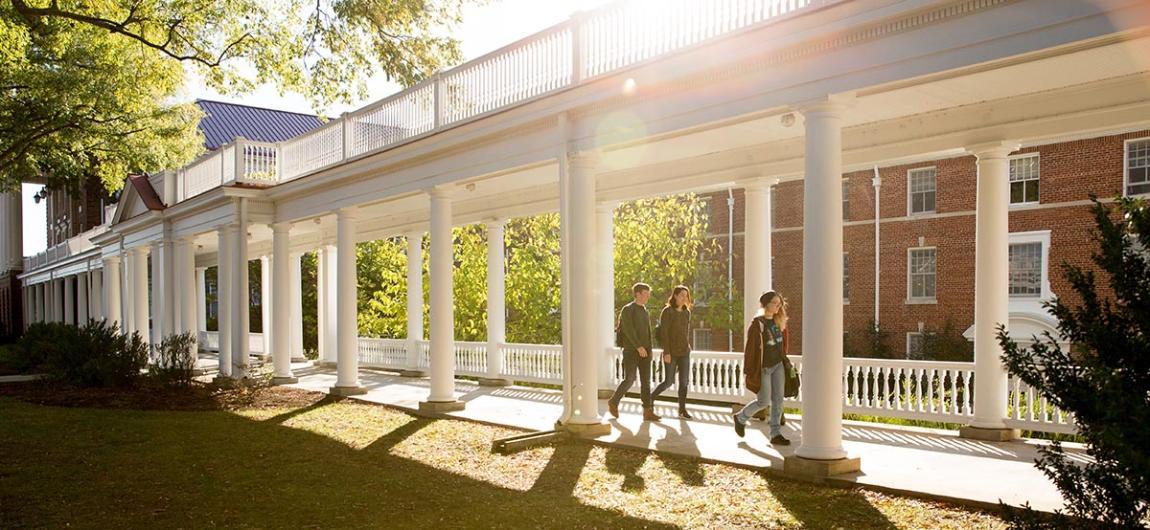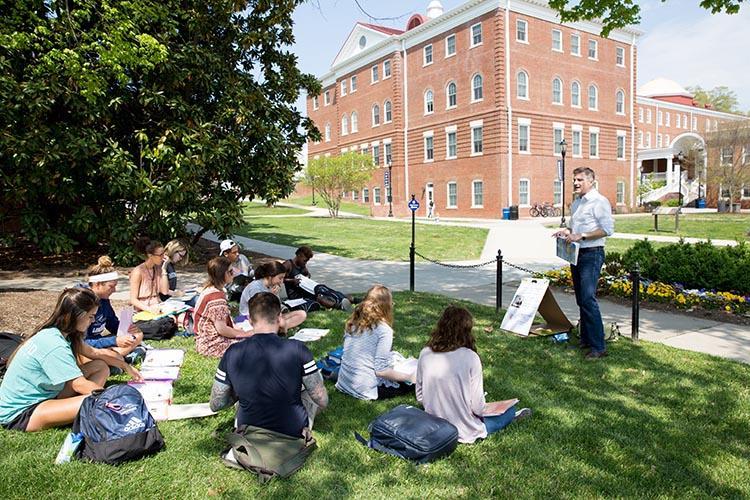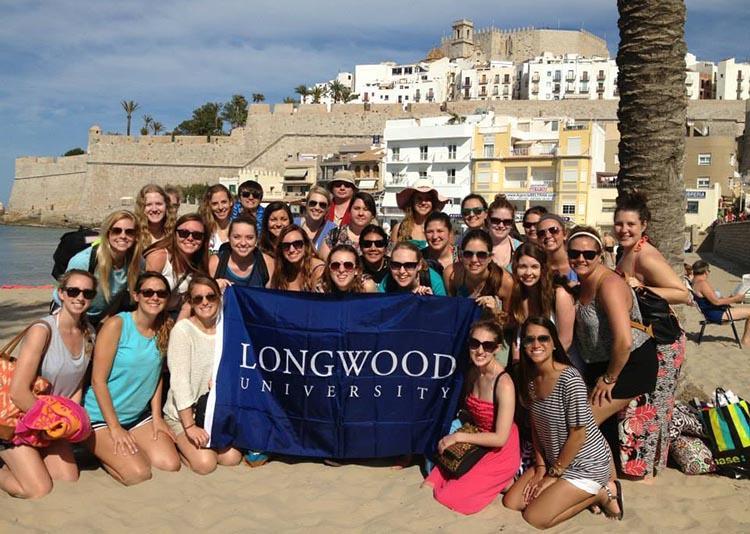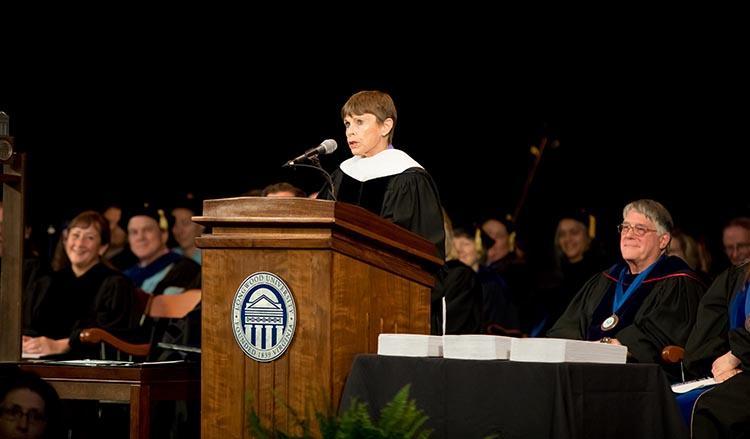

They’ll be honors scholars. Or student-athletes. Or studying abroad. Or elementary school teachers called to work with children. Or business majors who have caught the entrepreneurial bug.
Many of them haven’t yet been born.
They’re the current and future Lancers who will receive scholarships thanks to an unprecedented outpouring of philanthropy over the past six months among Longwood alumni and friends. That burst of giving was spurred by the challenge of an anonymous donor who set the terms one chilly morning last December: “I’m ready to take the field,” the donor told Courtney Hodges, Longwood’s vice president for institutional advancement. “But I need teammates.”
That was how the challenge was laid out: a fundraising blitz with a game-changing prize at its conclusion—a $5 million pledge for scholarships. But there was a big catch: The gift was in the form of a challenge match. To receive it, Longwood would have to raise another $5 million for scholarships on its own—and do it by July 1.
Longwood has typically been raising about $1 million for student scholarships annually. Raising five times that amount in half the time would require an extraordinary effort.
But as they have time after time, Longwood alumni and friends rose to the challenge, blowing past the goal and investing nearly $6 million in scholarships by the deadline last week. With the challenge match, today nearly $11 million has been added in scholarship funding for those scholars and world travelers and teachers.
“They did it,” said Hodges. “Once our alumni and friends found out about the game-changing money sitting on the table, they stepped up and reached it. What’s even more fulfilling, alumni from every decade since the 1930s contributed. That’s a symbolic achievement that sends a powerful message.”

Increasing the pool of scholarship funding available for students has been a particular priority in the last several years at Longwood, and the reason is more complex than many realize. Above all, it helps students who otherwise might not be able to afford college come to Longwood. Scholarship endowments also make Longwood more competitive when recruiting top students who face a choice between several higher education options. Student financial aid also strengthens individual programs like study abroad and the Cormier Honors College, while also serving as a barometer of a healthy institution—giving by alumni sends a strong signal that their time on campus was valuable and meaningful beyond graduation.
Additionally, it’s the next step in a process that began in 2015 when Longwood was selected to host the 2016 U.S. Vice Presidential Debate. Investment in the debate led to a number of physical and technical improvements to campus, and as name recognition increased from the unprecedented media coverage, applications reached all-time highs. The next natural step, said Hodges, is increasing scholarship availability so Longwood can take advantage of these achievements to attract and support promising students.
“This incoming freshman class is among the most accomplished that we’ve had in Longwood’s history,” said Jason Faulk, dean of admissions. “They are coming in ready to take advantage of everything we offer—study abroad courses you can’t find anywhere else, accomplished academic departments like nursing, a thriving honors college that pushes them to new heights, and Civitae, the new curriculum that puts citizenship at the heart of everything we do. With more scholarship funds available, we can put together more competitive packages so future freshman classes can have the same incredible profile.”
Often, said Faulk, a student’s decision when choosing between institutions is heavily weighed by finances. All things being equal, the university that is able to offer more scholarship dollars has a better chance at the student not only enrolling but also graduating in four years—another measurement of a healthy campus.
“The great thing about this money is its potential to touch nearly every student,” he said. “You don’t have to be a student-athlete or a particular major to be offered some of these scholarships. That’s very important as we attract an increasingly diverse student body.”

When giving to their alma mater—especially in terms of scholarship funding—alumni tend to prioritize the element of college they most valued. Those whose undergraduate GPA qualified them for honors societies like to support students with high academic achievement. Former collegiate athletes have a special affinity for supporting current teams. Perspective-changing experiences are perpetuated by alumni who remember their own moments of inspiration.
“The scope of the scholarships that were created or funded over the last six months shows the diversity of our alumni base,” said Hodges. “Alumni and friends of the university made large gifts supporting the Cormier Honors College, student-athletes, academically high performing students, financial aid, and many more categories. The scholarships are spread across campus, which says a lot about all the different types of experiences that Longwood students have.”
Apart from the matching gift, 35 new scholarships were endowed during the challenge. An endowed scholarship is one that has reached a certain threshold of funding—typically $25,000—that allows it to be awarded every year in perpetuity. Nearly that many existing scholarships saw their endowment increase, meaning the annual amount awarded increases, or in some instances the number of students who receive the scholarship increases, too.
Nearly 100 alumni and friends gave to the scholarship challenge as they worked toward the mark set by that anonymous donor.
In June, when Hodges called the anonymous donor to let her know the challenge had been met, she offered congratulations and expressed pride in her fellow Longwood alumni—and gave permission to reveal her identity: philanthropist and longtime Longwood benefactor Joan Perry Brock ’64. Just a few days earlier, Brock had been on campus for the dedication of the new Brock Hall, and also delivered a riveting address at Longwood’s graduate commencement ceremony in Jarman Auditorium.

She told her fellow Lancers that giving back, no matter what form it takes, is what’s important in life.
“What you will find is that you will soon be unable to imagine life without being involved, without pitching in,” Brock said. “It will become part of your cellular makeup. And when you get to my age, you’ll come to realize that success is measured not by the size of your bank account or the ZIP code you live in or the car you drive. The real yardstick is what you give of yourself, the help you provide, the love you spread.”
